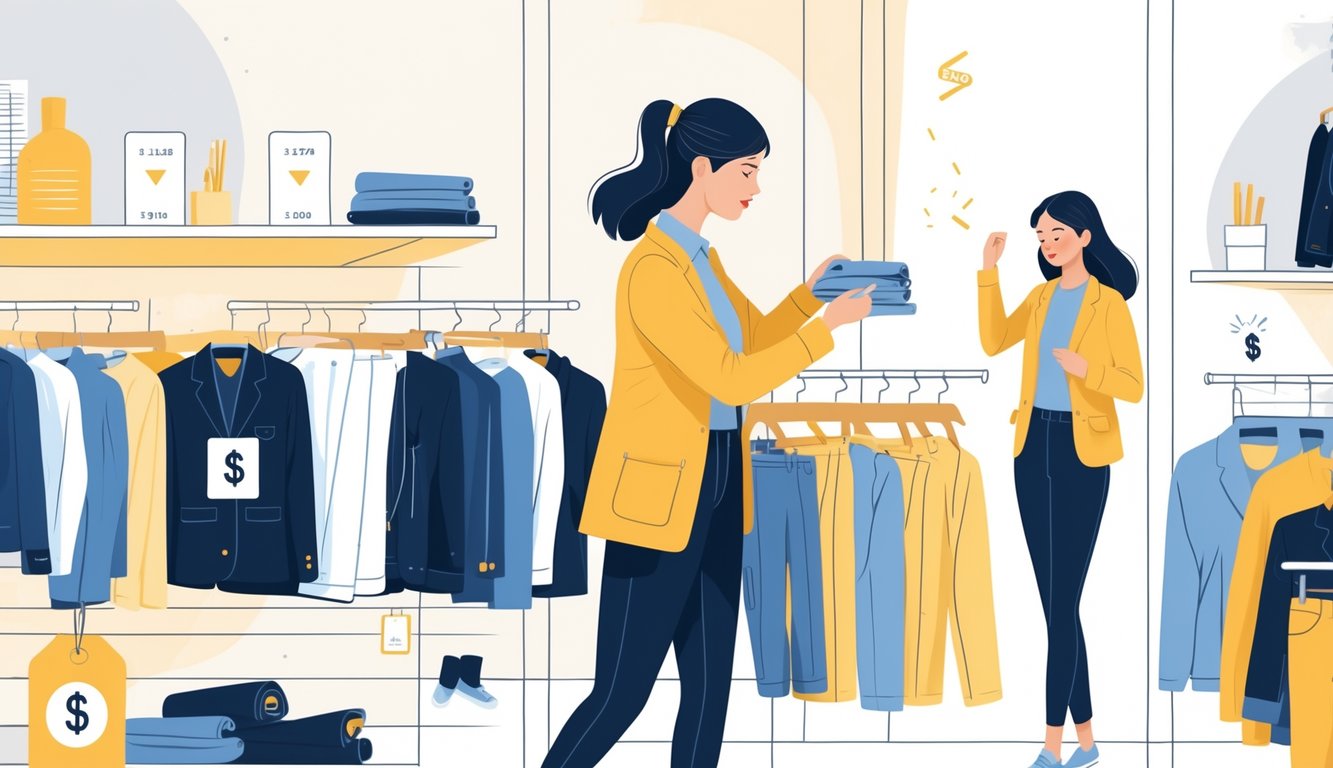
So, last week I basically zombie-walked past the store racks—prices on basic tees? Ridiculous. Who’s paying $30 for a shirt you’ll wear twice, then forget exists? Apparently, the average American drops over $1,400 a year on new clothes (Bureau of Labor Statistics, 2024), which… what? For what? Half of it collects dust. Swapping clothes instead just feels like the only thing that makes sense—space opens up, wallet chills out, and I don’t have to scroll endless “new arrivals” for hours. Some people act like swapping is for grandmas. I’m not buying it. It’s just practical.
Pulling out linen shirts and ditching winter sweaters is way more satisfying than shopping. It’s like, “Oh, I forgot I even owned this,” but you don’t spend a dime. Suddenly you’re ready for 90-degree weather, and you didn’t just make another “why did I buy this” mistake. Labeling a bin “summer: keep or donate” literally saves me twenty minutes every morning. Although, last time I tried organizing a swap, someone brought lasagna instead of clothes, so apparently, not everyone gets the memo. And those “bring only good stuff” rules? No one’s checking. MSN and RealSimple say you should write down what’s in storage to avoid buying duplicates, but who actually does that?
Let’s be honest, a messy closet just burns money. Swapping isn’t about making your closet look like a Pinterest board or living some minimalist fantasy. I’m just trying to stop my jeans from multiplying and eating my shirts. I found a swap group, labeled everything (okay, almost everything), and ditched the guilt. My favorite blouse? Not even mine originally. My savings? Real. And yes, I’m wearing the same dress shoes as last year. No one cares. Not even me, honestly.
Why Smart Wardrobe Swaps Matter Right Now
I keep shoving stuff back into my closet and still can’t find anything I want to wear. Seriously, it’s not just me, right? I buy another “on sale” polyester tee, thinking it’ll help, but it just adds to the pile. The average American tosses more than 70 pounds of textiles every year (EPA, 2021). Seventy pounds. That’s not just waste; it’s a money pit. Swapping hacks away at that, at least a little.
Saving Money in a Fast Fashion Era
Everyone’s pushing “cheap” fashion, but have you ever actually looked at your bank statement after a Zara binge? That $5 tee is never just $5—shipping, random add-ons, and suddenly it’s $60. I tried Swap Society (yeah, Nicole Robertson runs it), and sometimes I get a new-to-me shirt for free, sometimes it’s a couple bucks. Either way, it beats buying new.
I started swapping more, buying less, and my clothing bill dropped by at least a third. London’s 2024 Clothing Exchange? People left with twice as much, spent like 80% less. My wallet survived, and my brain stopped spiraling about sweatshops and gross markups. No guilt. No fine print. Just fewer receipts.
Reducing Closet Overwhelm
What drives me up the wall: opening my closet and seeing a ton of stuff, but nothing I want to wear. “I’ll wear it eventually” is a lie. A 2022 YouGov survey says the average person has 26 unworn things in their closet. Twenty-six! That’s not just clutter; it’s draining. I don’t want to think that hard before coffee.
Swapping out the junk doesn’t turn me into a minimalist, but it does make life easier. The best swaps (online or in-person) only want decent stuff—no pilled sweaters, no unraveling seams. Suddenly, I’m actually excited about what’s on each hanger. Less time fighting with hangers, fewer wrinkled shirts, and mornings don’t feel like a battle.
Supporting Sustainable Shopping Habits
Here’s the kicker: swapping slows down my fast fashion footprint. Fast fashion is a landfill nightmare. Textile recycling rates in the U.S. hover around 15%. The rest? Rotting. If I swap instead of buy, I skip the whole sweatshop-to-landfill pipeline, at least for one more shirt.
Some swaps run by nonprofits don’t use any packaging and actually tell you where stuff comes from. H&M could never. And the more people show up to swaps, the more brands notice we’re not all addicted to disposable trends. Sustainability is a moving target, honestly, but swapping makes me think about it instead of just buying whatever’s trending.
Brands love the “sustainable” buzzword, but I’ve never seen a fast fashion CEO hand out snacks at a swap. Have you?
How to Start Your Seasonal Wardrobe Swap
Standing knee-deep in last fall’s “maybes” and t-shirts I don’t remember buying, I keep asking why I waited. Seasonal swaps sound easy until you’re buried in jackets covered in cat hair. Tracking what I actually wear versus what just takes up space? That’s where the real savings come in. Less stress, too.
Assessing Your Closet Needs
Every swap, I get stuck on the same jacket. I swear I’ll wear it. Never do. The National Association of Productivity & Organizing Professionals says most people wear only 20% of their clothes. So 80% is just… guilt? Regret? I don’t know.
First thing I do: brutal honesty. Have I worn these jeans since last winter? If not, do they even fit? I try everything on. It’s uncomfortable, takes forever, but if I don’t, I’ll keep that weird sequin shirt forever. I scribble notes—staples, seasonals, duplicates. When the piles start toppling, I know I’m avoiding the hard decisions.
Sorting by Season and Style
Sorting clothes is like untangling headphones—messy and annoying. I dump everything out, then instantly regret it. A retail manager once told me: make five piles—keep, donate, fix, sell, “unsure.” Don’t keep ratty gym shirts for “painting someday.” You’re not painting.
Seasonal swaps matter. Summer shorts with swimsuits, raincoats with scarves. Someone once told me waterproof bags are crucial, but I always forget mine. Group by use (work, gym, whatever) and by season. It’s not about “sparking joy”—it’s about not digging for socks at 7:05 AM.
Storing Out-of-Season Items
I used to shove summer dresses in plastic bags under the bed—huge mistake. Everything smelled like rubber by March. I tried those vacuum-sealed bags from The Container Store, but ripped one and dust got everywhere. Cotton bins with labels (season and year) are my new favorite. They don’t trap moisture, and I can actually find things.
Attics and basements? Nope. Temperature swings ruin fabrics. I stick stuff on the closet’s top shelf, lightest up top. Shoes in clear bins, sweaters with moth-repellent. If I forget to label, I regret it every season. Not perfect, but way better than digging through a sad, wrinkled pile every April.



